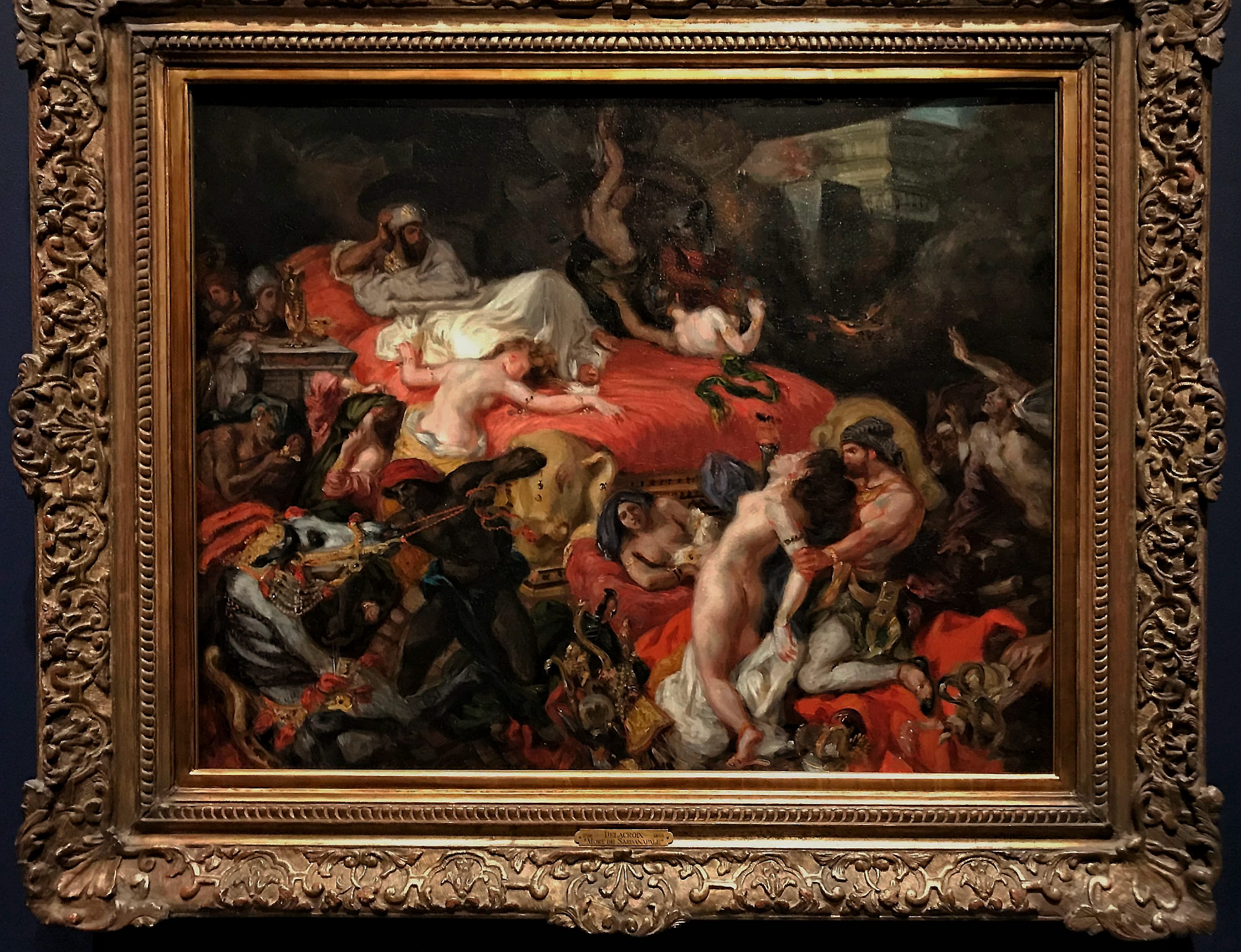
Eugène Delacroix (France, 1798–1863)
La Mort de Sardanapale (The Death of Sardanapalus)
oil on canvas
73.71 × 82.47 cm. (29.02 × 32.47 in.)
Painted in 1844
Collection of Philadelphia Museum of Art, America

Eugène Delacroix (France, 1798–1863)
La Mort de Sardanapale (The Death of Sardanapalus)
oil on canvas
392 × 496 cm. (154 × 195 in.)
Painted in 1827
Collection of Louvre Museum, Paris, France
In the luxuriant array of exhibitions on offer in Paris this October, there's one place that's easy to forget, and yet, the sight of a single painting is enough to make you feel ecstatic. It's right in the middle of room 700 of the Denon wing of the Musée du Louvre, on level 1, in this immense red-carpeted room, that one of the institution's wonders has returned after ten months of restoration: "The Death of Sardanapalus", painted by the illustrious Eugène Delacroix in 1827. We thought we knew this painting well. Wrong!
For decades, this composition of carnal explosions had been crumbling under eight coats of varnish which, over time, had rendered it an unappetizing chestnut brown. Here we have Delacroix's magic touch, resurrected live from the early 19th century, spread over a height of 3.90 meters and a width of 4.90 meters. With the iridescent flesh of his beautiful slaves, the bandaged muscles of his eunuchs, his prancing horses, his moiré fabrics and everywhere, absolutely everywhere, the gold and precious stones adorning the bodies promised for sacrifice.
The grandiose, suicidal monarch enthroned at the top of the canvas is almost forgotten by the painter. Delacroix has taken the pretext of a mythological tale to depict an orgy that reappears today in all its power. The observer's point of focus is the luscious buttocks of a damsel arched by the pain of a scimitar that has just pierced her. Here, Delacroix seems to be quoting Rubens' nudes, themselves inherited from the Venetians of the Renaissance.
This avalanche of bodies was judged immoral when it was presented at the Salon, which then made and unmade the artistic glories of France. The work remained in the painter's studio for fifteen years, then passed from hand to hand and was carted to New York by the great dealer Paul Durand-Ruel, who wanted to establish an international reputation for Delacroix. Until 1921, when the gentlemen of the Louvre finally accepted it.
This resurrection of Sardanapale is part of an extensive restoration campaign launched by Sébastien Allard, head of the Louvre's paintings department. It was preceded by the highly successful facelift of "Les Femmes d'Alger", a mythical Oriental painting by the same Eugène. Now it's the turn of another of the Louvre's flagship works to get a facelift. "La Liberté guidant le peuple" will be back before the Olympics in the big red room, next to "Sardanapale" and opposite the still very brown Géricaults, which also deserve a facelift.










